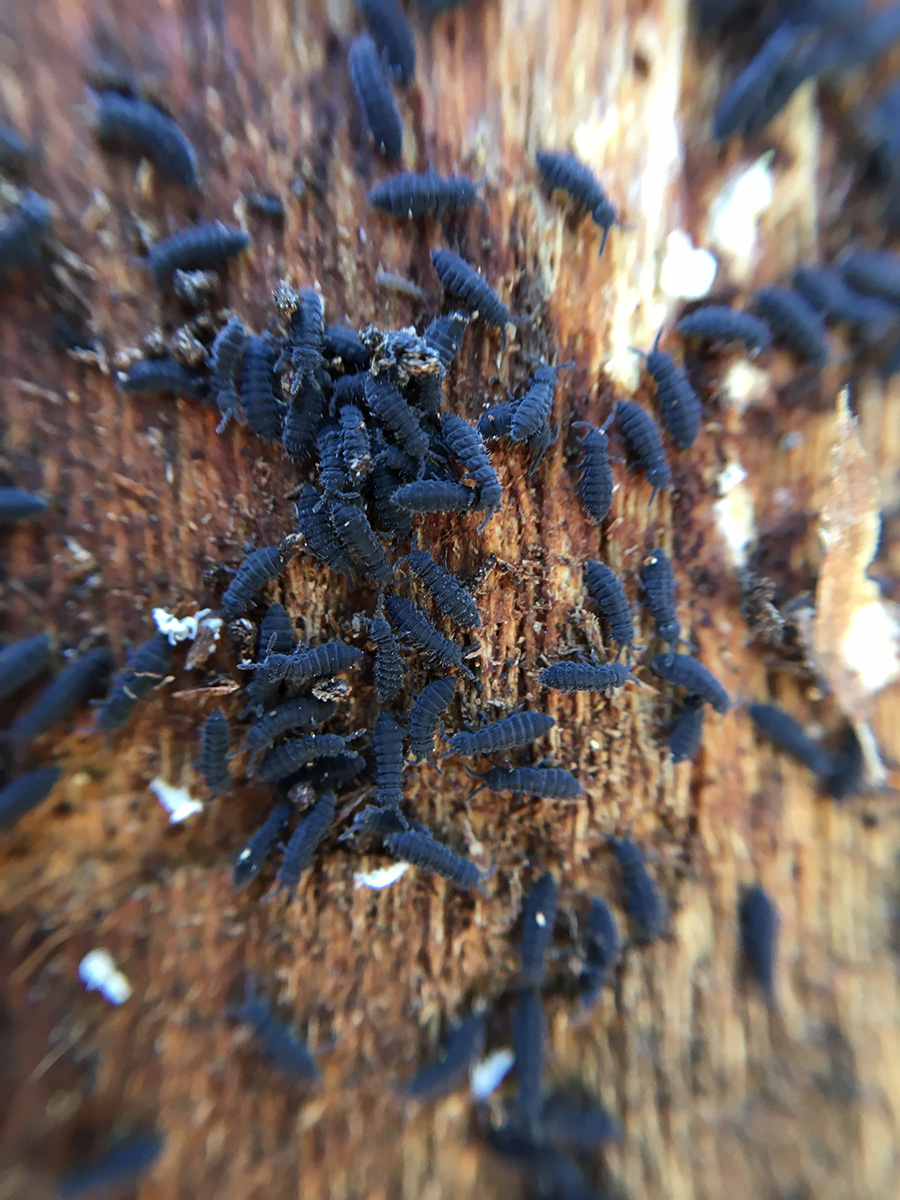
By Kait Chapman, Extension Educator in Lancaster County
Insects and their relatives have miraculous ways to survive the cold bite of winter, whether it is migrating southwards like the monarch butterfly, burrowing deep into the soil or finding pockets of warmth under logs, leaves and sometimes even our homes. However, some insects thrive in the cold and continue to be active in winter despite the presence of ice and snow.
Meet the snow flea — a cool temperature-loving arthropod that’s not really a flea or an insect. Snow fleas are actually a type of springtail, soil-dwelling arthropods that have six legs like insects but have mouths that retract into their head — something insects can’t do. Because they’re not insects, they’re also different than the fleas we associate with biting and infesting our four-legged companions. Instead, snow fleas are thought to feed on decaying organic matter and microscopic fungi and algae, and while they do “jump” like regular fleas do, they use a special forked appendage called a furcula to help them move around.
As their common name suggests, snow fleas are most often encountered on top of snow, or on sidewalks and around homes during the winter when the snow starts to melt. Their dark, purplish-blue bodies are small, but they make up for their tiny size in sheer numbers. People are often left perplexed and sometimes distressed by the sudden appearance of hundreds or thousands of arthropods outside of their home. Despite being a nuisance, snow fleas are harmless and should be left alone.
How the snow flea is able to tolerate the cold of the snow while many other insects and people cannot, is a pretty spectacular feat of science. Snow fleas produce a special protein in their body that acts similar to antifreeze, letting them continue to stay active despite the chill. So, while we may be deprived of our larger, beautiful insects this season, continue to keep an eye out for these fascinating little springtails.